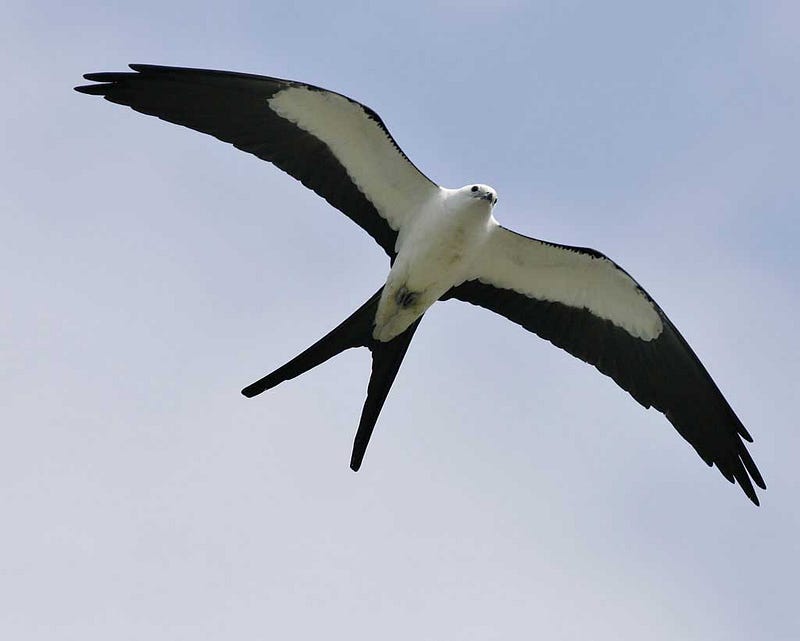
For anyone who lives in Florida or other parts of the Southeastern United States, the above silhouette is easily recognizable. It belongs to one of the most beautiful and unique birds of prey: the swallow-tailed kite, Elanoides forficatus.

The kite is a migratory bird that lives in South America year-round, but migrates north in the summer to breed. They can be seen throughout Florida and along the Southern Atlantic and Gulf coasts of the US. It can easily be distinguished by its forked tail, something not found in other raptors.
While I previously mentioned that long-legged wading birds were among my favorites, birds of prey are a close second. This was true even before I moved to Florida, but has been cemented in no small part by this incredible bird. I always get a bit exciting whenever I see one now. Unfortunately, this is most commonly when I am driving in a car and cannot safely observe the kite for long. What draws me to them? It is similar in some respects to my love of sea turtles. The flight behavior of the kite is incredibly graceful. A picture cannot do it justice.
As you watch that video, pay close attention to the forked tail. In nature, form dictates function and this is no exception. The muscles of the kite allow it to manipulate the feathers of each side of the fork independently. This allows it to perform aerial maneuvers that would not be possible for other species, including tight 180º turns.
“Beauty is in the eye of the beholder.”
That sentence has become somewhat cliché, but that is because there is truth in it. While it is often used when comparing human ideals of beauty, I feel that it is just as applicable to the natural world. Since its coloration is only black and white, some might consider the swallow-tailed kite to be rather plain, especially when compared to the huge variety of colors seen among other species of birds. For example, the male painted bunting, Passerina ciris, pictured below.

However, the amount of time I have spent in nature has caused me to appreciate some of the more subtle aspects of beauty that I come across. The swallow-tailed kite is an example of one of those: the beauty of movement. I could spend hours watching one of these birds fly. I find their movement very calming.
Deep down, I think we all recognize such beauty. It is why dance is considered an art form. Birds are not creating art when they fly, nor fish when they swim. However, simply because the movement is functional does not detract from its beauty and grace. In my opinion, it adds to it instead. Understanding the form and function of movement helps in its appreciation.
Learning to ask ‘Why?’ and ‘How?’ does not mean that I am taking the wonder and beauty out of everything (a common criticism of scientists). Analyzing nature gives me an opportunity to find new avenues of wonder and beauty that I had never even considered before. As you go out into the world, look beyond the obvious, and I think you will find layers of beauty that go far deeper than you can imagine.
Next time, I’m going to share a few more examples from my own personal experience of animals that might not be conventionally beautiful, but that I feel exhibit those deeper layers.